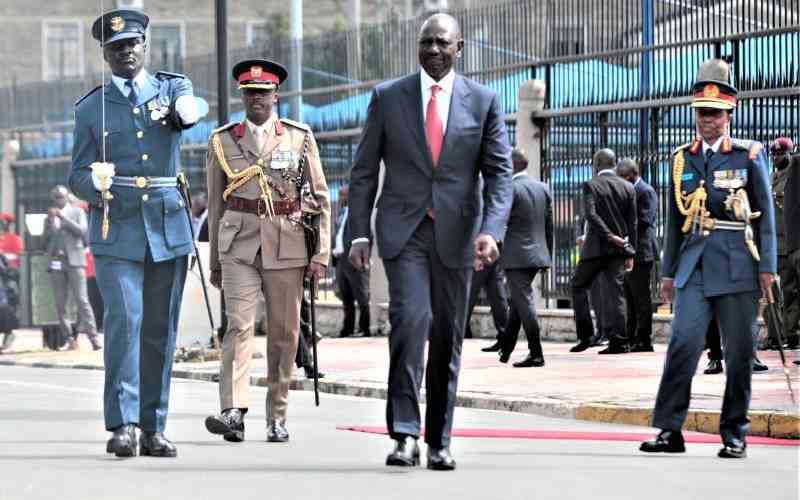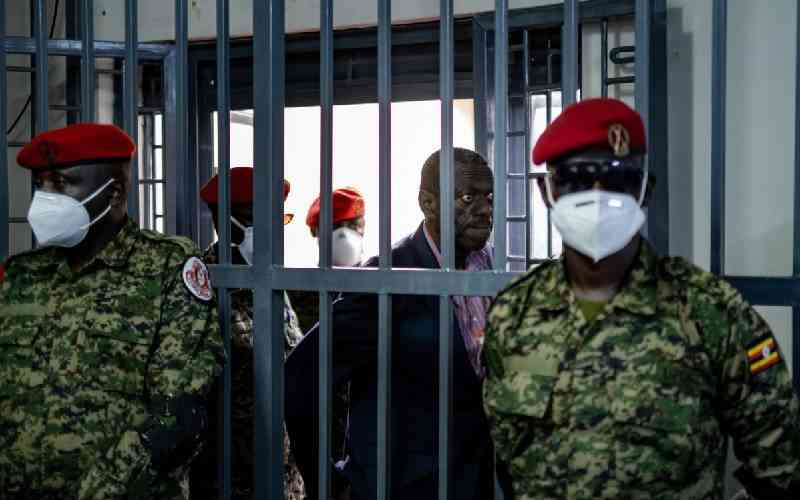By LEONARD KULEI
Baringo, Kenya: At 87, Moi Primary School Kabartonjo is the oldest school in Baringo County.
It is popular in the region and beyond but age has little, if anything, to do with this popularity. The school, which was known in the 1940s as “Kamesien”, a Kalenjin corruption of the word “Mission”, is renowned for producing some of Kenya’s most accomplished politicians and academics.
One of them is none other than former President Daniel Toroitich arap Moi.
Records at the school show that Moi was an outstanding student. He was a fast learner and often got rewards for his good academic performance.
Moi, who was to become Kenya’s second President, also loved the gospel and remains a staunch Christian to date.
But the former President is not the only notable person who cut his academic teeth at “Kamesien”. The school produced other prominent personalities including the first Baringo North MP Willy Kamuren, Cabinet ministers Henry Chepkoiwo and Andrew Kiptoon and former Kenya Medical Training Centre Director and short-time Health Assistant Minister William Boit.
The school has no doubt made an important contribution to the country. But for a school that will, in the not so distant future, celebrate 100 years of existence, Moi Primary School Kabartonjo is today a pale shadow of its former illustrious self.
Half the classrooms in the school are semi-permanent; dilapidated timber walls let in cold and wind that leave lower primary children shivering every morning. In addition, pupils must scramble for the few desks in overcrowded classrooms in pursuit of knowledge.
The school has no library and some teachers are forced to squeeze into one office as the other is used as a classroom.
Head teacher Alex Kaptum says the increasing number of pupils due to the Free Primary Education programme has stretched the already limited facilities to the hilt.
More classrooms
“My deputy has been forced to squeeze into another room to allow his office to be used as a small library. Another office is used as a store. We need more classrooms,” said Mr Kaptum.
There are over 600 pupils in 16 rooms, most of which have never been refurbished since colonial times.
“We have many pupils but the classrooms are not enough. We need help from well-wishers and the Government to provide resources that will enable us cater for these pupils,” said Kaptum.
Stay informed. Subscribe to our newsletter
The only primary school in Baringo County during pre-independence Kenya is reputed for spreading Christianity and neutralising traditional practices such as Female Genital Mutilation, early marriage and witchcraft in the community.
It drew pupils from far-flung areas of the district, most of them lured by the food offered by the missionaries. Some converted to Christianity and started preaching in the villages.
“Most children came to Kabartonjo to avoid hunger at home. Some even chose to begin preaching and are known pastors to date.
Some came to get treats like sugar, biscuits and packed milk offered by the missionaries,” said veteran colonial chief Chebet Eriong’.
According to Chesang Cherutich, who dropped out of the school in Standard One in 1950 due to the long distance – 30km – he had to walk to get there and back home, the institution started with missionaries teaching the purely traditional Tugens the Bible. It later became a primary school.
“It was difficult to walk to school every day. Matters were worsened by the fact that the white man spoke a language I could not understand. I dropped out and looked after my father’s animals,” said Cherutich.
The elderly man, however, regrets dropping out of school. He says some of his friends who, as he puts it, “learnt how to count sticks faster than me” went on to professional careers and their children now lead happy lives.
The school’s great moment of pride came in 1978, when its very own former student, Moi, took over the country’s reins of power. It was then renamed Moi Day and Boarding Primary School Kabartonjo, a name that saw the student population surge and performance improve.
The former President also built Moi High School Kabartonjo, alongside the African Inland Church, Kabartonjo.
Despite the school being the 2010 beneficiary of the Government Stimulus Package and is being proposed as the Centre of Excellence in Baringo North district, there is nothing to write home about; it is a struggling institution, just like any other village school.
Recently, the school was elevated to integrated primary school status to cater for children with special needs. But with a scarcity of learning resources and only two teachers looking after 20 visually impaired children, prospects are not very bright.
“The special needs children need more teachers, walking sticks and Braille machines to afford them an opportunity to learn like their colleagues. We lack most of these things and anyone willing to help will be highly appreciated. This is the only centre where these children can access learning in the entire district,” said Joshua Cheptarus, the Knut Baringo branch chair.
 The Standard Group Plc is a
multi-media organization with investments in media platforms spanning newspaper
print operations, television, radio broadcasting, digital and online services. The
Standard Group is recognized as a leading multi-media house in Kenya with a key
influence in matters of national and international interest.
The Standard Group Plc is a
multi-media organization with investments in media platforms spanning newspaper
print operations, television, radio broadcasting, digital and online services. The
Standard Group is recognized as a leading multi-media house in Kenya with a key
influence in matters of national and international interest.
 The Standard Group Plc is a
multi-media organization with investments in media platforms spanning newspaper
print operations, television, radio broadcasting, digital and online services. The
Standard Group is recognized as a leading multi-media house in Kenya with a key
influence in matters of national and international interest.
The Standard Group Plc is a
multi-media organization with investments in media platforms spanning newspaper
print operations, television, radio broadcasting, digital and online services. The
Standard Group is recognized as a leading multi-media house in Kenya with a key
influence in matters of national and international interest.




